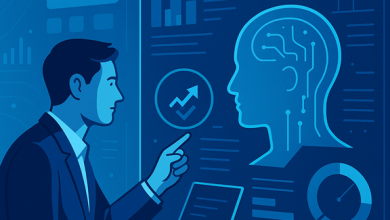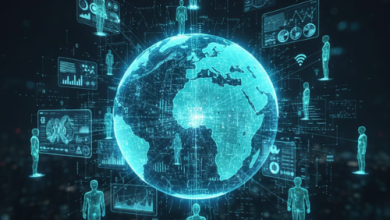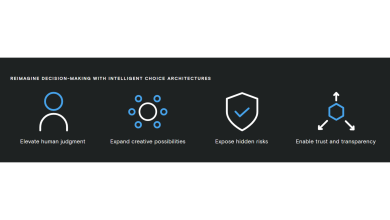
Why AI Makes Micropayments Essential for Publishers and Creators
AI is quietly breaking the internet’s business model. Algorithms now read, remix and republish content at a pace no human publisher can match, usually without credit or payment. Subscriptions and ads no longer work for most users. I call this Cosmin’s Law: 98% of people will never subscribe. That leaves publishers and creators fighting over a slim 2%, while AI circulates the rest of their work for free across the web.
So what comes next? Micropayments: tiny, fair, nearly invisible transactions that fit how both humans and AI consume content.
Subscription Fatigue Meets AI Acceleration
Think of your own digital habits. You probably do not subscribe to every newsfeed or newsletter you glance at. You graze, skim, hop. AI accelerates that grazing with summaries, snippets and voice answers. That breaks subscription logic: “all you can eat for one price.” Why pay for a buffet if you are just grabbing an apple?
Subscription fatigue is real. In 2025, 42% of streaming consumers say they have too many subscriptions, and 35% say they plan to cancel at least one service within the next year. Meanwhile, a survey by Pew Research Center found only 17% of readers paid for a news outlet subscription last year, while 83% simply bounced when hitting a paywall. Subscriptions work for superfans, but not the grazing 98%.
For Creators: Every Note Can Be a Song
AI gives solo creators superpowers. A designer can generate ten layout options in minutes. A teacher can create a micro lesson. But if your revenue only comes from bundles such as courses or brand deals, you miss the value in the little bits. That one riff or insight deserves its own dime.
Micropayments let every note turn into a track, just as iTunes allowed listeners to buy the song they loved without paying for the full album. That move changed music forever because it matched how people wanted to consume it. The same shift is overdue for other types of content. Every post, article or video has value, and consumers can choose and pay for exactly what they need without buying the package.
For Publishers: From Paywalls to Portals
Publishers face pressure from two directions at once. AI drives new waves of attention, but it also breaks articles into fragments that are read without clicks or attribution. Traditional paywalls do not fit this new reality. Readers often want just one chart, one article or one data point, not an entire subscription.
Micropayments create that option. A reader might pay 50 cents for an article or an hour of access through a time pass. Experiments at The Washington Post with flexible pay-as-you-go models show this approach is gaining traction. This is how publishers can adapt monetization to the modular way content is consumed in an AI-driven world.
Reality Check: Trials, Limits and Truths
We have been hearing about micropayments for decades. Why have they not stuck? Friction and decision fatigue caused by the complexity of the systems offered. In the past, micropayments required users to preload wallets, buy credits or approve every charge. The experience felt overwhelming and uninviting.
What is different now is how the spread of AI changes consumption. Content is broken into smaller pieces, and users expect to pay only for what they use. That shift makes micropayments not just possible, but natural.
Modern tools also remove friction. Users can simply click to read or watch, and a running tab will settle automatically once it reaches a few dollars. At this point, value has already been delivered. No forced commitment, no upfront hurdles, and the user always has control. And for publishers, the technology is turnkey, plugging directly into existing ad systems without the need for new workflows.
AI Scraping and the Legal Pressure to Pay
Here is where AI makes the case for micropayments impossible to ignore. Large language models are trained on enormous amounts of scraped content, much of it produced by publishers and creators who never see a cent. The lawsuits filed against OpenAI and Microsoft by The New York Times and other outlets highlight the growing friction: AI depends on human-made knowledge, but the compensation structure is missing.
Without a micropayment layer, the risk is clear. Publishers may block access altogether, starving AI systems of fresh input and drowning out smaller creators. Micropayments offer a fairer path: AI tools can pay pennies per query, article, or snippet, ensuring value flows back to the originators. If AI can scale learning to billions of tokens per day, it can scale payments just as efficiently.
What Psychology Tells Us About Paying Small
The consumer story is equally important. Behavioral economics shows that people are more willing to spend in small, low-friction increments than to commit to recurring fees. Studies show that willingness to pay for news increases significantly when the option is framed as “pay per article” rather than “monthly subscription.”
Humans naturally resist recurring obligations, but they are open to small, situational payments that feel fair. AI amplifies the need for this structure because it personalizes and fragments consumption. Micropayments fit both technologically and psychologically.
What This Tells Me
AI did not invent the need for micropayments. It exposed the mismatch between how we consume and how we pay. Subscriptions appeal to superfans. Ads sell at scale. But neither serves the 98% who want choice, fairness and flexibility.
Micropayments are the third way. They match AI’s fast, modular, personalized content. They give publishers and creators a path beyond collapsing ad models. And they give users exactly what they want: the freedom to pay only for what they use, no more, no less.
The digital content world is overdue for its iTunes moment. But it is happening now.



